Tri 2 CB Final
Trimester 2 Collegeboard MC Final
Corrections
Q2
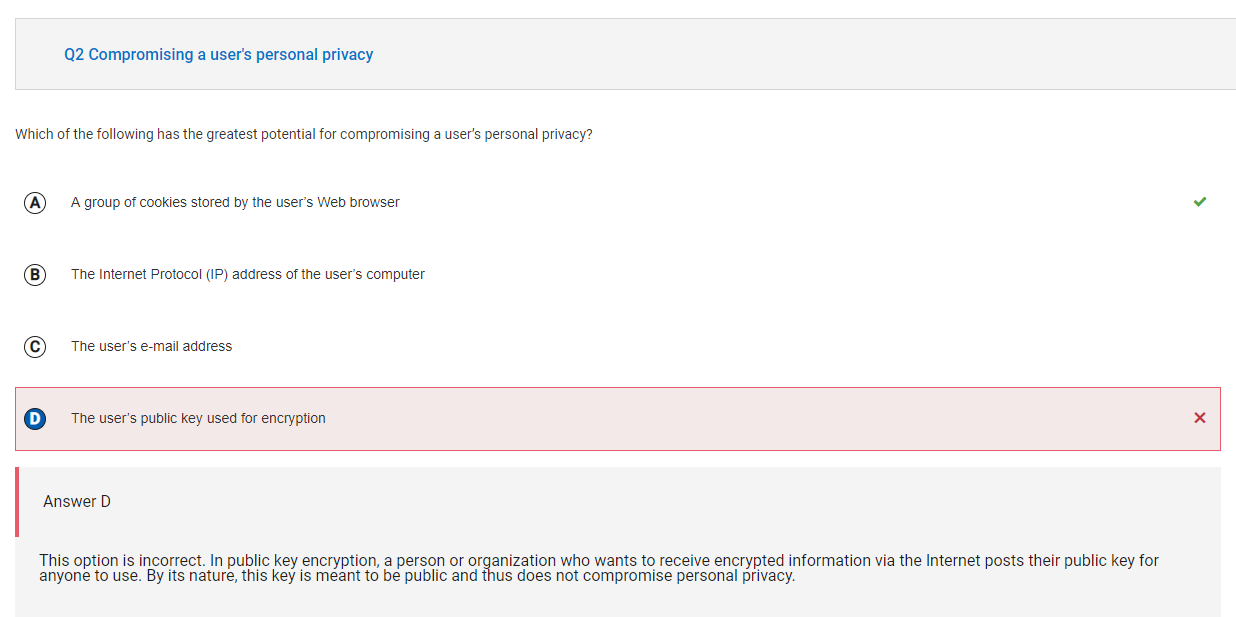
Incorrect Answer: D
Correction: A, Messages are broken into packets, but they can be received in any order and still be reassembled. Each packet contains data to be transmitted, as well as metadata for routing and reassembling the data upon receipt. This allows the packets to be received in any order and still be reassembled correctly.
Topics to watch videos on: 4.1, skill 5A
Q3
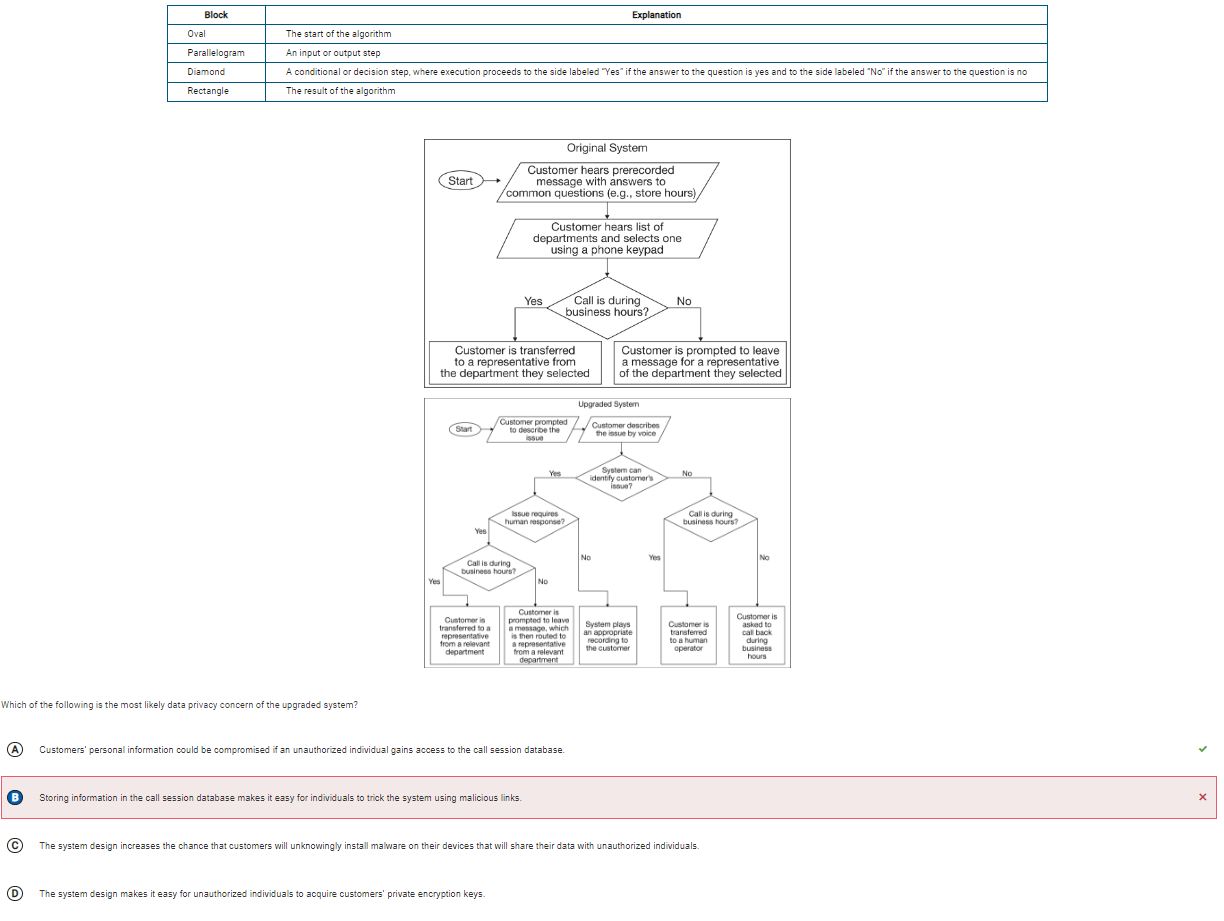
Incorrect Answer: B
Correction: A, Statement I is true because strings of characters can be represented by sequences of bits. All digital data is represented at the lowest level as sequences of bits. Statement I is true because strings of characters can be represented by sequences of bits. Statement II is true because colors can be encoded as sequences of bits. Statement III is true because sequences of bits can be used to represent sound.
Topics to watch videos on: 2.1, skill 3C
Q17
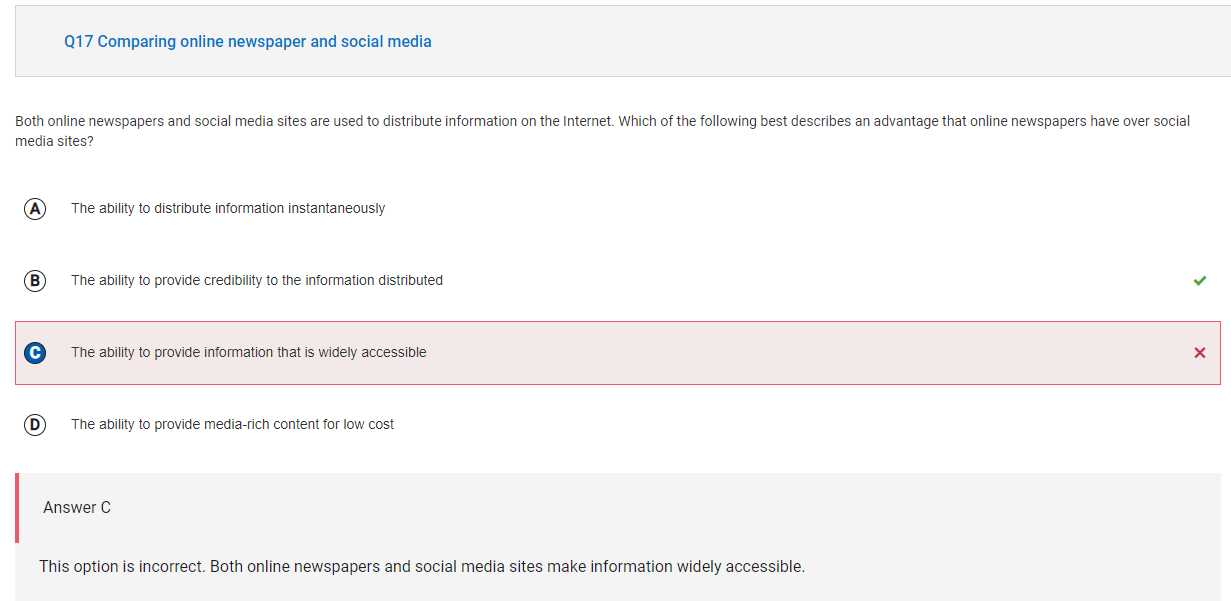
Incorrect Answer: C
Correction: B, Binary 1111 is equivalent to 23+22+21+20, or decimal 15. Binary 0011 is equivalent to 21+20, or decimal 3. Binary 0110 is equivalent to 22+21, or decimal 6. Binary 1111 is equivalent to 23+22+21+20, or decimal 15. Decimal 9 is not equivalent to any of the given binary numbers.
Topics to watch videos on: 2.1, skill 2B
Q19
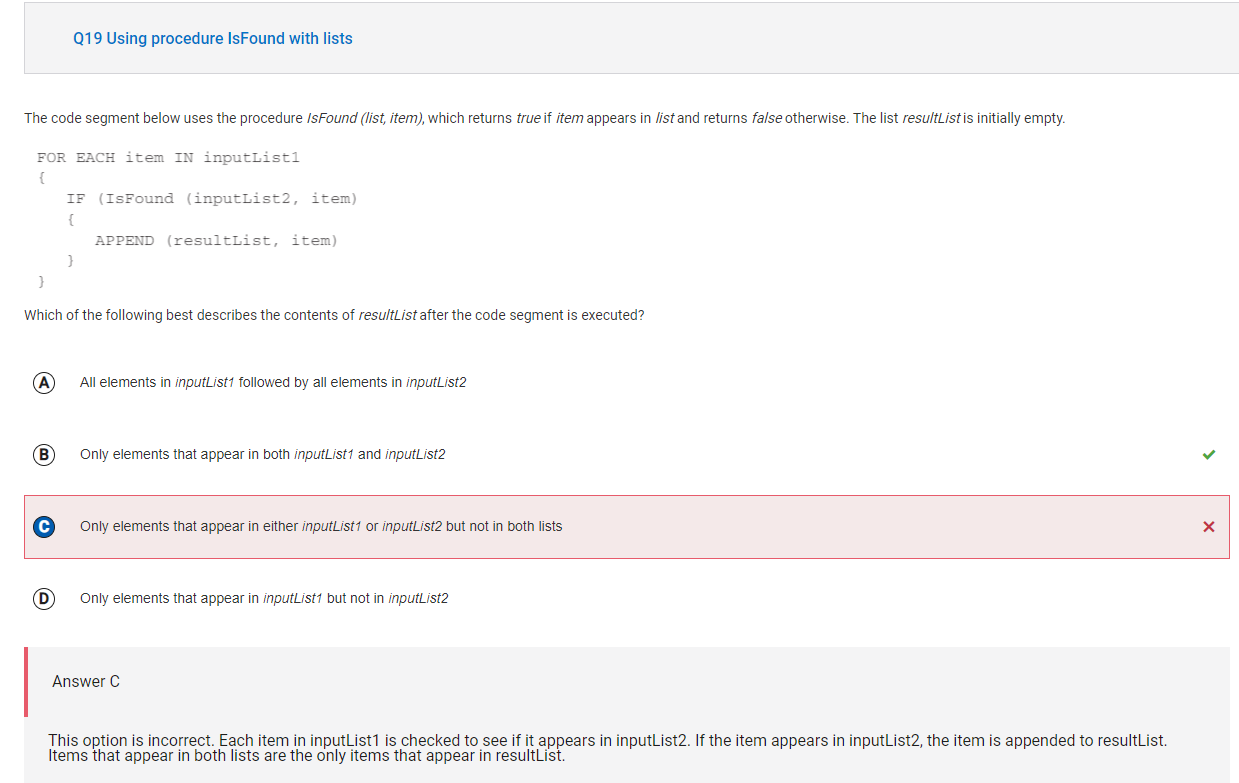
Incorrect Answer: C
Correction: B, This code incorrectly charges customers who use more than 25 units of electricity. These customers are charged $7 for each of the first 25 units and $5 for each subsequent unit. For examples, if a customer used 32 units of electricity, they should be charged $5 for the first 25 and $7 for the additional 7 units (32 – 25 = 7 units), for a total charge of $174. This code segment would incorrectly charge the customer 25 * $7 + 7 * $5 = $210 for the 32 units. If the number of units of electricity used is 25 or less, the cost is 5 times the number of units. Otherwise, the cost is 5 times the first 25 units plus 7 times the number of units above 25. For examples, if a customer used 32 units of electricity, they should be charged $5 for the first 25 and $7 for the additional 7 units (32 – 25 = 7 units), for a total charge of $174.
Topics to watch videos on: 3.6, skill 2B
Q22
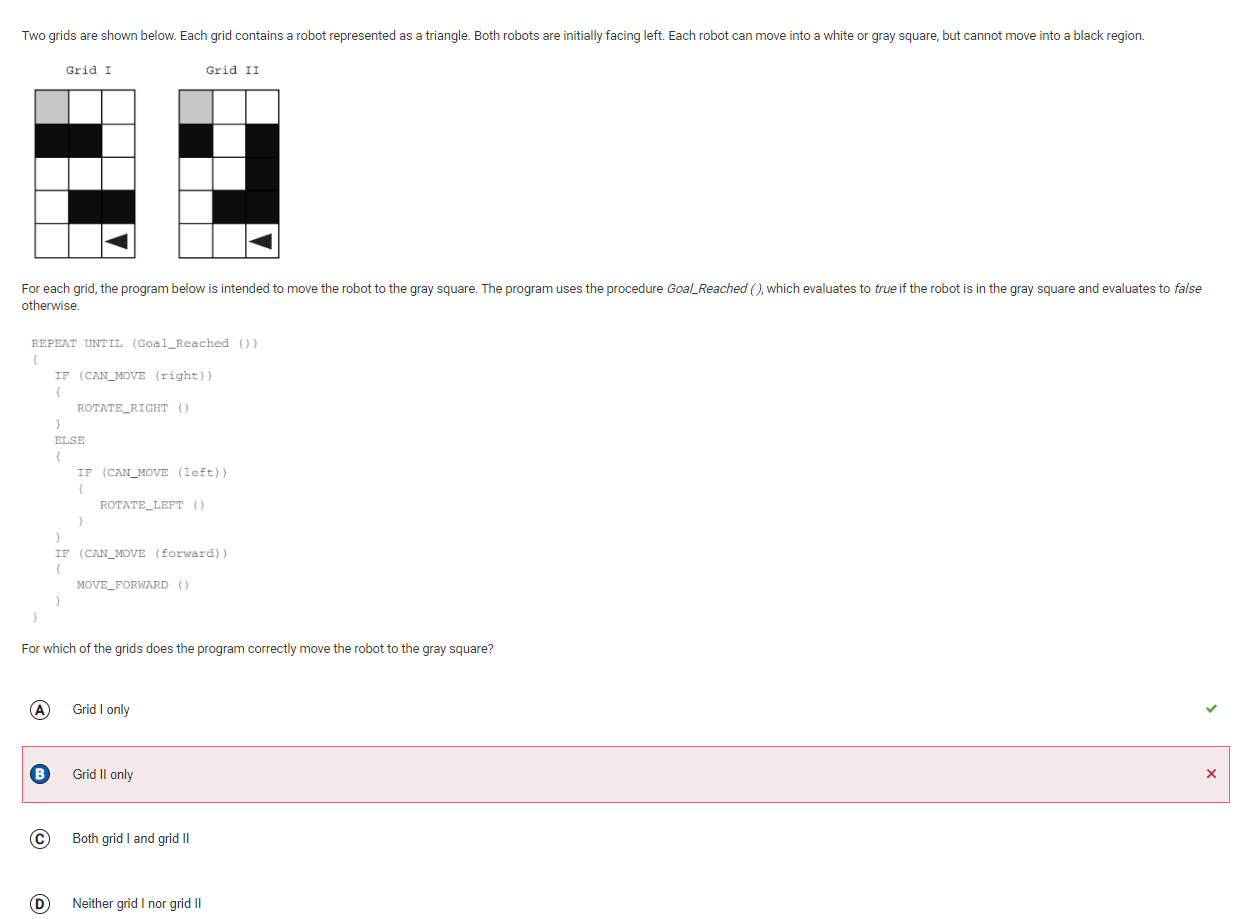
Incorrect Answer: B
Correction: A, This code segment assigns “yarn” to word1, “zebra” to word2, and “xylophone” to word3. The first statement assigns the value of word1 to the temporary variable temp. The second statement assigns the value of word3 to word1. The third statement assigns the original value of word1, which is stored in temp, to word3. The original values of word1 and word3 are interchanged, which reverses the values of the variables as intended.
Topics to watch videos on: 3.3, skill 2B
Q27

Incorrect Answer: D
Correction: B, Incorrect. While the list elements are strings, the indices of a list are typically nonnegative integers. List indices are typically nonnegative integers. The exam reference sheet describes a list structure whose index values are 1 through the number of elements in the list, inclusive. So, 4 would be considered a valid index.
Topics to watch videos on: 3.2, skill 3A
Q33

Incorrect Answer: B
Correction: A, Incorrect. While the list elements are strings, the indices of a list are typically nonnegative integers. List indices are typically nonnegative integers. The exam reference sheet describes a list structure whose index values are 1 through the number of elements in the list, inclusive. So, 4 would be considered a valid index.
Topics to watch videos on: 3.2, skill 3A
Q34
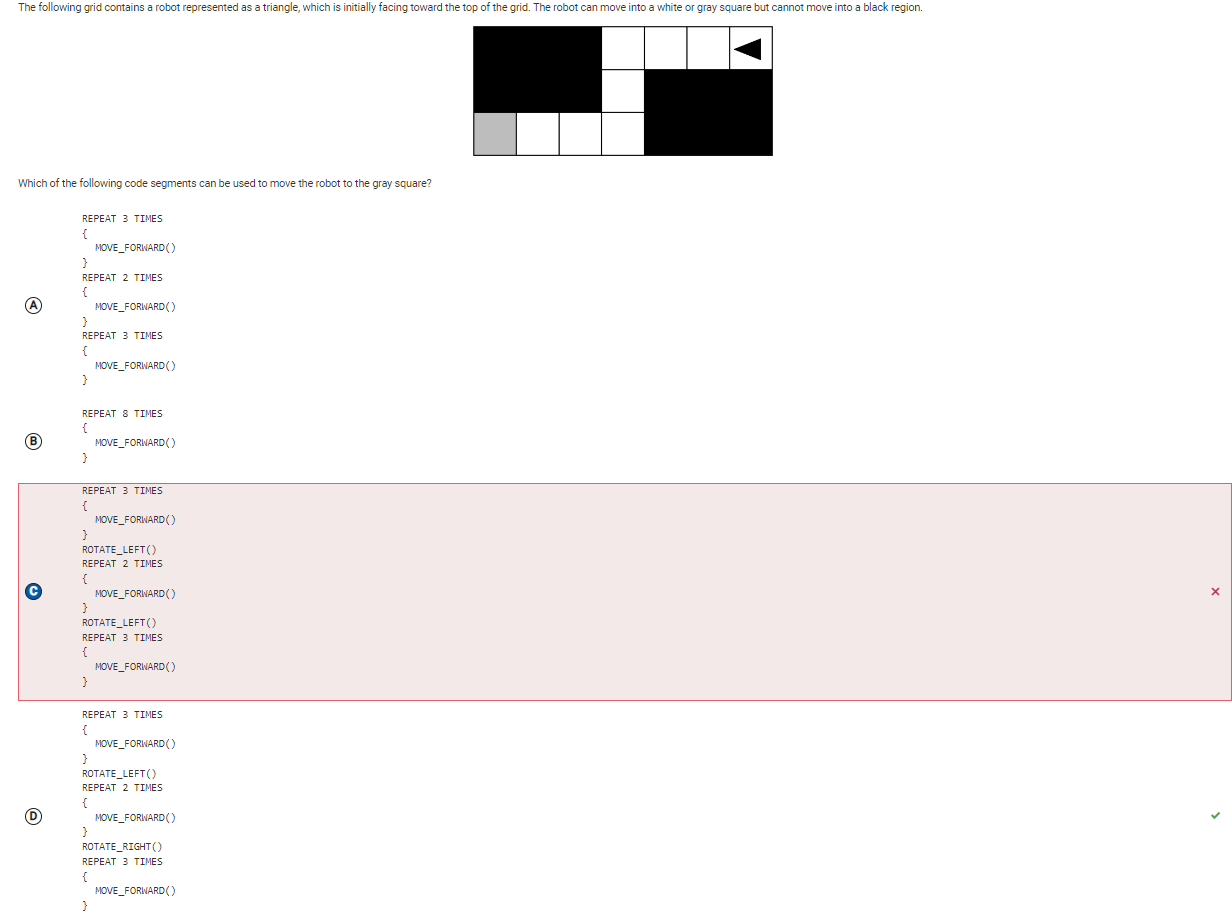
Incorrect Answer: C
Correction: D, Incorrect. While the list elements are strings, the indices of a list are typically nonnegative integers. List indices are typically nonnegative integers. The exam reference sheet describes a list structure whose index values are 1 through the number of elements in the list, inclusive. So, 4 would be considered a valid index.
Topics to watch videos on: 3.2, skill 3A